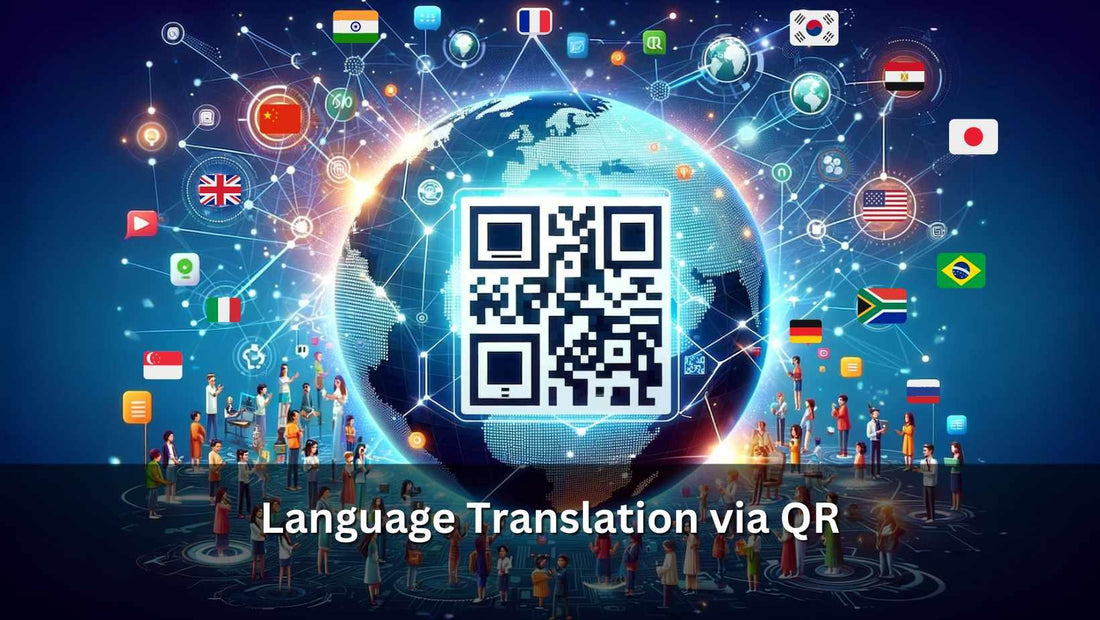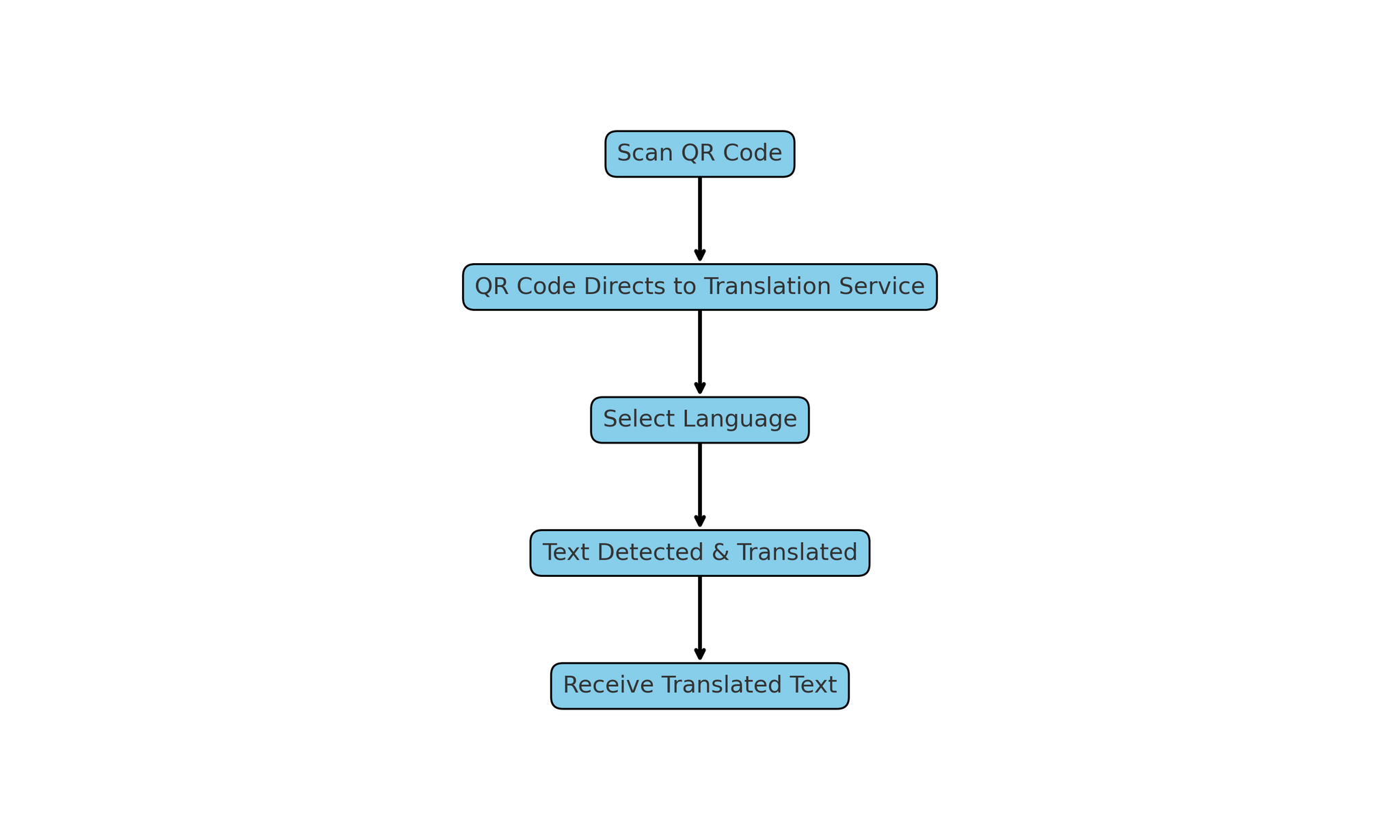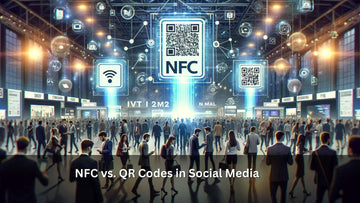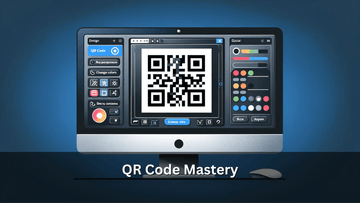Language Translation via QR

Contents
- 1- How to Use QR Code for Language Translation
- 2- Understanding QR Code for Language Translation
- 3- How to Use a QR Code for Language Translation
- 4- Benefits of Using QR Codes for Language Translation
- 5- Importance of a Dynamic QR Code for Language Translation
- 6- How to Create QR Codes for Language Translation
- 7- Conclusion
How to Use QR Code for Language Translation
In today's interconnected world, the ability to communicate across language barriers is more important than ever. QR codes, those small, square matrices of black and white pixels, have emerged as a powerful tool in this endeavor. By simply scanning a QR code with a smartphone, users can instantly access a wealth of information, including language translations. This technology offers a seamless, instantaneous way to bridge communication gaps, making it invaluable in a wide range of settings, from tourist attractions and restaurants to international conferences and product packaging. As we delve deeper into the use of QR codes for language translation, we'll explore how this simple yet innovative technology is helping to connect people across linguistic divides, fostering a more inclusive and accessible global community.
Understanding QR Code for Language Translation
-
What is a QR Code for Language?
A QR (Quick Response) Code for language is a digital barcode that, when scanned, directs the user to a translation of text into a selected language. Leveraging the widespread use of smartphones, these QR codes provide immediate access to language services. By encoding text or a URL that links to a translation database, QR codes serve as conduits between languages, easing the process of understanding for speakers of various tongues. The creation of a QR code linked to text or a webpage displaying the translation offers a swift and convenient solution to overcoming language barriers. For more comprehensive details on the mechanisms and benefits of QR codes for language translation, QR Translator offers a deeper dive.
-
Evolution of QR Codes in Language Services
The journey of QR codes from simple tools for tracking parts in automotive manufacturing to essential instruments in language translation reflects a significant evolution. Initially designed in the 1990s for efficiency in logistics, QR codes have transcended their original purpose. The proliferation of smartphones has catapulted these codes into the limelight, transforming them into gateways for information dissemination, including language translation services. Innovations in QR code technology now allow for dynamic content updates, making them perfect for providing real-time, accurate translations. This evolution has seen QR codes integrate with artificial intelligence and machine learning technologies, enhancing the quality and speed of translations. Today, QR codes in language services are not just about providing direct translations; they are about creating interactive, engaging experiences that enrich the user's understanding and appreciation of different cultures.
How to Use a QR Code for Language Translation
-
QR Code Translator Campaign
Implementing a QR Code Translator Campaign in your business is a straightforward process that can significantly enhance the customer experience, especially for those who speak different languages. Here’s how to do it:
-
Identify Key Materials for Translation: Determine which materials or information would benefit your international customers most. This can include menus, product descriptions, instructions, or services offered.
-
Select a Translation Service: Choose a reliable translation service or software that can provide accurate translations in the languages your customers speak. Accuracy is crucial to avoid miscommunication.
-
Generate QR Codes: Use a QR code generator that supports embedding URLs linking to the translated content. Create a unique QR code for each piece of material and each target language if necessary.
-
Test Your QR Codes: Before deploying, test each QR code with various smartphones and QR code scanning apps to ensure they direct to the correct translations smoothly.
-
Deploy and Signpost: Place the QR codes prominently alongside the original materials. Ensure there are clear instructions on how to scan the codes. It might be helpful to include a brief explanation or visual symbols indicating the purpose of the QR codes for those unfamiliar with them.
-
Gather Feedback and Update Regularly: After implementation, collect feedback from users to improve the experience. Keep the translations and the QR code links updated to maintain accuracy and relevance.
This step-by-step approach can make your business more accessible to a wider audience, breaking down language barriers and enhancing customer engagement.

Benefits of Using QR Codes for Language Translation
-
For Multinational Customers
QR codes for language translation are a boon for multinational customers, offering them a more welcoming and accessible service experience. By scanning a QR code, these customers can instantly understand product details, services, and instructions in their preferred language. This not only enhances their satisfaction and comfort but also significantly reduces the frustration and alienation non-native speakers may feel. Moreover, it conveys a message of inclusivity and respect for cultural diversity, encouraging loyalty among a global customer base and potentially increasing the time and money they spend with the business.
-
Multilingual Manuals and Inclusive Customer Service
Implementing QR codes for language translation transforms traditional customer service into an inclusive, multilingual platform. It enables businesses to provide comprehensive manuals, guides, and support in multiple languages without the need for costly print materials. This approach not only saves resources but also streamlines the customer experience, allowing users to access the information they need in their own language with just a scan. Inclusive customer service facilitated by QR codes addresses the needs of a diverse clientele, fostering a positive brand image and enhancing customer satisfaction across different language groups.
-
For Brand Promotion and Traffic Increase
QR codes are a strategic tool for brand promotion and driving traffic to digital platforms. By integrating QR codes with language translation services, businesses can appeal to a broader audience, including those who might have been unreachable due to language barriers. This inclusivity can significantly boost brand visibility and reputation, especially in multinational markets. Furthermore, QR codes can direct users to multilingual websites, social media, or promotional content, increasing online traffic and engagement. The ease of accessing information in their preferred language makes customers more likely to explore further, participate in promotions, and share their positive experiences with others, amplifying brand reach and impact.
Importance of a Dynamic QR Code for Language Translation
-
Why Should You Use a Dynamic QR Code for Language
How to Create QR Codes for Language Translation
Creating QR codes for language translation involves a straightforward process that significantly enhances accessibility and engagement. Firstly, selecting a QR code generator that supports dynamic content is essential. This feature is crucial for updating translations seamlessly, without the need to change the QR code itself. After selecting a tool like QR Code Generator, the next steps include preparing the content in both the original and target languages to ensure accuracy and cultural relevance. Once the content is ready, it's uploaded to a platform capable of hosting multilingual pages.
The QR code is then generated to link directly to this content. At this stage, customization of the QR code's design can be applied to align with your brand identity or to clarify its purpose. The final crucial step is testing the QR code across various devices and QR scanners to verify that it correctly directs users to the intended translations. This process underscores the importance of tools that offer functionalities beyond simple generation, such as analytics and customization options, making services like QR Code Generator invaluable resources in the creation of QR codes tailored for language translation.

Conclusion
QR codes have revolutionized the way we bridge language barriers, making global communication more accessible and inclusive. By providing instant access to translations, these versatile tools enhance understanding and interaction among people from diverse linguistic backgrounds. The simplicity and effectiveness of QR codes in language translation underscore their transformative impact, heralding a new era of connectedness in an increasingly multicultural world.
We at NFC Tagify provide all sort of NFC Solutions or you may contact us: Tel. 01600800080, Email: info@nfctagify.com









